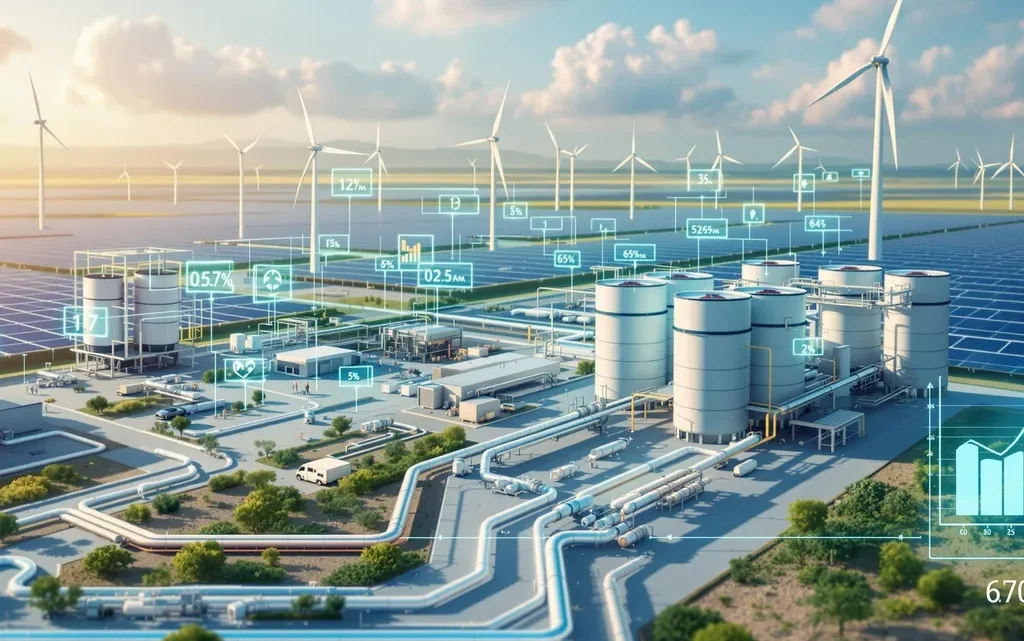
Global Green Hydrogen Market to Hit $19.2 Billion by 2032, Driven by Decarbonization Push
April 16, 2025Green hydrogen isn’t some far-off dream anymore—it’s picking up serious steam. According to a fresh report from U.S.-based research firm Exactitude Consultancy, the global green hydrogen market is on track to hit $19.2 billion by 2032. That’s not just a big number—it’s a clear sign that industries, governments, and investors worldwide are waking up to the need for cleaner energy, especially in sectors like heavy transport and industrial systems where emissions really add up.
Momentum Backed by Policy, Pressure, and Possibility
This rapid growth isn’t happening in isolation. As the pressure mounts to ditch fossil fuels—whether it’s public demand, tougher regulations, or climate goals—green hydrogen is stepping into the spotlight. Using electrolysis powered by renewables, it offers a zero-emissions alternative with a ton of versatility: from powering trucks and factories to playing a key role in industrial decarbonization.
The Tech That’s Powering the Shift
What’s pushing this trend forward? Better tech—especially in the electrolyzer space. The report highlights innovations in PEM (Proton Exchange Membrane), alkaline, and solid oxide electrolysis setups. All three have different strengths: alkaline systems are tried-and-true and affordable, PEM ones are bulkier but more adaptable for renewables, and solid oxide units are great for tapping waste heat, boosting efficiency.
Still, whatever the setup, they all depend on one key thing: a steady stream of cheap, clean electricity. That, plus solid infrastructure and storage, will determine whether the hype matches the reality.
Investment Is Heating Up—But So Are Risks
Going from today’s market to $19.2 billion in under a decade means there’s a lot of opportunity on the table. And it’s not just the developers who stand to benefit. Everyone from parts manufacturers and engineering firms to clean energy producers and logistics companies could have a stake in this game.
But there’s also a catch: a lot of the projects still don’t pencil out financially without help. Incentives, long-term purchase agreements, and government funding are going to be make-or-break factors here. The report likely slices and dices things by tech, region, and application—whether it’s transportation, power, or industrial use—to help investors figure out exactly where to place their bets.
More Than Energy—It’s a Full-On Ecosystem Shift
This isn’t just about swapping one fuel for another. The ripple effects of a rising green hydrogen economy are massive—from new hydrogen infrastructure to jobs in manufacturing and system design. As money pours into the space, we’ll see faster improvements in both performance and affordability across the board.
Green hydrogen’s been talked about for over a century, but in the past ten years—thanks to climate commitments and a deeper understanding of lifecycle emissions—it’s finally gotten a real seat at the table. This latest report just adds even more momentum.
What’s Standing in the Way?
If there’s one theme the report keeps coming back to, it’s this: infrastructure. Today, most hydrogen is still “grey,” made with fossil fuels. Moving to green means building out pipelines, rolling out electrolyzers, and ramping up storage. And let’s not forget the economics—getting the price of electricity down and scaling up electrolysis tech is going to be key.
That’s why countries with lots of sunshine, wind, and open space—think Australia, Chile, Spain, the UAE—are in prime position to become export hubs. But local hydrogen clusters anchored by big industrial players are popping up across the globe, too.
Policies need to keep pace. Whether it’s clear timelines, carbon taxes, or subsidy programs, government support will shape how fast this transition happens. The EU and South Korea are already putting serious money on the table, and in the U.S., clean hydrogen tax credits under the Inflation Reduction Act might give the domestic market the jolt it needs for the next decade or more.
The Takeaway
The bottom line? With a projected value nearing $20 billion, green hydrogen is no longer on the fringe. It’s becoming a pillar of the new energy economy. If we can keep driving down the cost of hydrogen production through innovation and policy, we may be looking at the next great bridge fuel of the clean transition.
There’s no doubt about it—the race is on. And whether you’re in engineering, investment, or infrastructure, everyone’s watching where this goes next.


 With over 15 years of reporting hydrogen news, we are your premier source for the latest updates and insights in hydrogen and renewable energy.
With over 15 years of reporting hydrogen news, we are your premier source for the latest updates and insights in hydrogen and renewable energy.